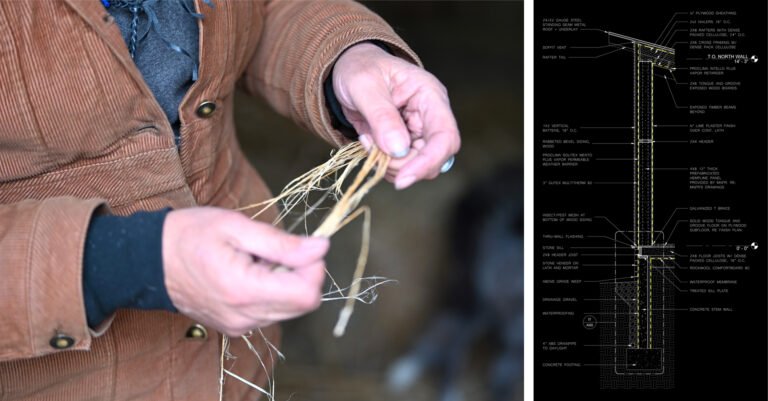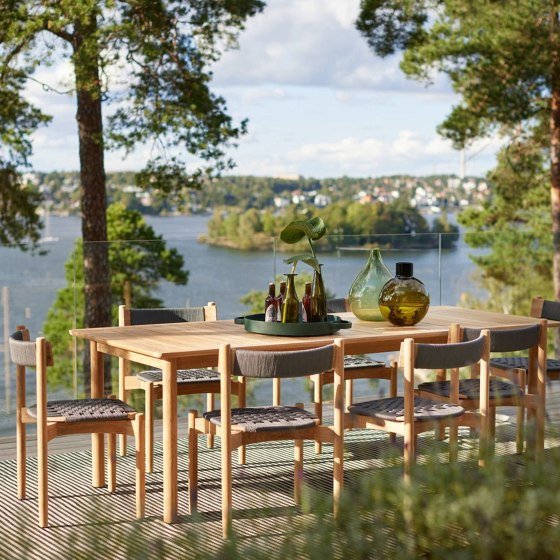At The School of Architecture, new voices unpacked Frank Lloyd Wright’s trickiest design principle
The desert ignites the imagination. In the stark vastness, you’re reminded that you’re a tiny, fleshy piece of something unending. It was in this context—of small acts of lively expression within a larger arid wilderness—that visitors to the School of Architecture’s (TSOA) Arcosanti campus encountered Organic, an exhibition that ran for a month through mid-May. The show offered a contemporaneous view of an unagreed-upon design term that continues to hold special relevance for TSOA.
Organized by director Stephanie Lin, the exhibition acknowledged that, as a design term, organic is both cumbersome and lacking in clarity. It continues to be strongly associated with Frank Lloyd Wright, who founded Taliesin West in 1937 as a winter campus for his namesake design school; in 2020, the institution rebranded and moved to Arcosanti, a utopian settlement established in 1970 north of Phoenix by Wright acolyte Paolo Soleri. Connotations of the organic are many and varied. The index for the five-volume Frank Lloyd Wright: Complete Works is a hilarious indication of this, listing approximately 35 specific classifications of its use.
Organic leaned into this ambiguity through an emphasis on part-to-whole relationships that characterize today’s information-rich, materially conscious global society. Putting aside Wright’s formal ideas, the show collected ten pieces by North American designers, which ranged from a delicate, ceiba-seed-imbued silver necklace to a rigorous architectural model. The vagueness but also spareness indicated by this use of organic (the term) make Organic (the show) feel especially relevant to contemporary aesthetics.

The objects were installed in the interior and exterior of Arcosanti’s Craft III building. After descending a staircase, visitors encountered two works: Petrichor, rough-hewn, pulp paper vessels produced by the experimental studio ArandaLasch, and Breathe, a scaled-down version of a housing prototype the Brooklyn office SO–IL originally installed at the Salone del Mobile 2017. Next up was Tawaw Architecture Collective’s elegant Three Sisters, a slowly twirled mobile that was framed by a circular aperture punched into a concrete wall (a distinctive feature of Arcosanti’s design). The remaining objects were moored on a gravelly expanse in a covered area below the building. Most were small and similar in size. This scalar relationship did a few clever things, such as underline the formal differences, and thematic resonances, between objects, while also training attention on the texture of the surrounding surfaces. Frequent gusts of wind made visitors notice the fragile stature of the objects, and given their tactile qualities, one felt drawn to touch them. Six Bells by the Arcosanti Ceramic Studio rang out, and Ja Architecture Studio’s Organic Sway rocked in the breeze. The latter expresses an idea about how organic has long been the subject of disputes within Wright’s history. The piece name-checks an 1887 drawing of a house Wright made in the course of a job interview with Louis Sullivan. In the margins, the two dueled over conflicting uses of organic in the design: Wright reduced the term to an understanding of the plan’s geometry, while Sullivan used it to describe architectural ornament.


Other pieces, like PRŠIĆ & PRŠIĆ’s Scrap Object, took on a cheeky interpretation of organic that imagined ceramics as a recyclable resource. Fixed with globules of goop and looking messy but intriguing, Scrap was an incredible contrast to Terrol Dew Johnson’s Form over Function, another compelling assemblage that acrobatically curled in on itself to form a flexible U-shaped basket. Made from materials (wood, bear grass, sinew) sourced from the Tohono O’odham Nation, Form expresses the pre-Wright, Indigenous impulse that “form and function should be one.” T+E+A+M’s Cones conveyed an idea about organically producing material through postconsumer construction debris found on vacant sites in Detroit. Altogether, the show felt wonderfully coy, subtle, experimental, and communal.
It also charted a path forward for TSOA. Lin, who joined the school in 2021, noted that the exhibition gave TSOA the opportunity “to step back and reexamine the term organic in order to identify new opportunities and relevance and with a new set of participants in the conversation.” She added that the school’s move to Arcosanti “has leveraged our ability to explore alternative and future forms of pedagogy, experimental design, community, and connections to our environments and landscapes.”


Organic, ultimately, was about process: Converting raw material into a finished product was core to each artifact. TSOA’s reevaluation of the term comes at a time when society has grown politically anxious and the planet continues to be depleted of resources. What does it mean to value “the organic” in our current moment of crisis? Time is explicit in organic processes, which variously evolve, unfold, and grow. Design is similar, as it requires ample time and resources to grow an initial thought into built form. The ten works in Organic are a gentle reminder of the precariousness of humanity’s relationship to the environment but also of design’s potential to navigate new and complex challenges through integrated approaches.
Nick Shekerjian is an architect at Exhibau USA and founder of ONS, a design studio in Phoenix that investigates massive spatial scales, representation, and nature.




